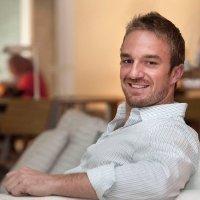Vango is a marketplace that connects art lovers with artists selling original works of art. In episode 26, we connect with Ethan Appleby, CEO & Co-founder of Vango.



Vango is a marketplace that connects art lovers with artists selling original works of art. In episode 26, we connect with Ethan Appleby, CEO & Co-founder of Vango.



 Vango is a marketplace that connects art lovers with artists selling original works of art. In episode 26, we connect with Ethan Appleby, CEO & Co-founder of Vango.
Vango is a marketplace that connects art lovers with artists selling original works of art. In episode 26, we connect with Ethan Appleby, CEO & Co-founder of Vango.
Kevin: This episode of The Crowd is brought to you by Near Me. Power your marketplace with Near Me.
Hi. Welcome to The Crowd, a podcast by Near Me. We’re talking about peer-to-peer marketplaces. We’re talking collaborative economy and we’re talking about thought leadership. We’re talking about all these things, any and all of them with some of the best minds in the field. And of course, I’m your host, Kevin Cohen.
Today, we’re going to be talking with Ethan Appleby, the co-founder of Vango. What is Vango? Vango is a marketplace that connects buyers with artist where you can buy original art work directly from the artist.
Hello. I’m your host Kevin Cohen. I’m super excited about today’s interview. I’ll be joined by Ethan Appleby. Ethan is the CEO and co-founder of Vango. Ethan, welcome to the show.
Ethan: It’s good to be here, Kevin. Thanks for having me.
Kevin: So for our listeners who don’t know about Vango, what is your marketplace?
Ethan: Yes. Vango is a marketplace that connects independent artists with people looking for original art. And, you know, we’re really trying to change the way people approach personal art and make it a more enjoyable experience. I think there’s a lot of intimidation when people think about original art, the gallery experience, confusion on pricing. And so we’re trying to simplify that and really make it enjoyable and help someone who has never purchased a piece before buy their first piece or someone who’s looking to build on a collection they already have to find some great works by emerging artists as well.
Kevin: Okay. And how do you simplify it? Just give us kind of the high level of what pain you removed from the art buying process.
Ethan: Good question. I think there’s three, I mean, key ones. One is the idea of certain, knowing what it’s going to look like in your space. Maybe you see a piece online or out on the streets somewhere and you’re always like, first question is like, what’s that going to look like? It’s like try before you buy. And so we have a visualization technology that you see the art true scale virtually hanging on your wall called augmented reality.
The second I would say is just, I don’t know, the look and the feel. We don’t use genre, media and movement, you know, just how the art world kind of categorizes art. We try to come up with fun sort of collections like Spotify collections like art by mood, art by room, you know, local artists and so helping you. More relatable ways people discover art will be the second.
And the third is pricing and really addressing that. I think most people are confused by, you know, why this is $10, why this is 100, why is this a million. And so we have a price instruction where artists start, you know, on $100. And the more they sell, the more they can sell it for. So if you go and you see more expensive pieces, you’ll have an idea that “okay, it’s supply and demand.” Because they sold this many pieces, they moved up.
Kevin: Very cool. Well, before we jump down the Vango rabbit hole, I’ve got some rapid fire questions for you.
Ethan: Okay.
Kevin: What book do you recommend most often?
Ethan: The book I often recommend is Good to Great. I read it probably eight years ago. One point that sticks out to me which is very difficult especially as a startup was the idea actually of getting rid of like 20% of your customers, the ones that cost you the most like pain and heartache. And with me and approaching Vango, you know, often we have from both sides, you know, we’re trying to balance the marketplace. And you’ll find that you have a client who is just taking so much of your time and at the end of the day like not purchasing. While we strive to have great customer service, sometimes it’s like prioritization is the number 1 most important thing for a startup to do. I think looking at that from like a customer’s perspective is one important and challenging thing especially early on because every customer counts so much.
Kevin: Where do you spend most of your time online?
Ethan: Most of my time online? Well, I got rid of Facebook so far this year. I’m trying to stay off of that. For me, it ranges anything from I’d say BBC to mashable to ESPN. They’re probably the three sites that I visit the most.
Kevin: Great.
Ethan: That and shopping on Amazon.
Kevin: Right. Well, that’s a dangerous one. What peer-to peer-marketplaces or services do you like to use on a daily or weekly basis?
Ethan: Sure. So I use obviously I think Uber and Lyft almost on a daily basis as one marketplace. There’s another one called Unwind Me which brings massages to your homes. So that’s convenient and then others might be – there’s another like Insacart or Sprig which I don’t know if that’s a full marketplace but I use it on a daily basis as well.
Kevin: Nice. What are some of the things that you like to do when you’re not working?
Ethan: I love to travel. So I lived abroad for five years in the Middle East in Abu Dhabi and got to see a lot of the world and still love to travel to new places. I also like to, I’m learning to kiteboard and skydive.
Kevin: Nice. Well hopefully, you’re not doing too dangerous things. I’m sure your company needs you.
Ethan: Yeah, yeah.
Kevin: So give us your back story. What did you do before you started Vango?
Ethan: Coming out of school, I did Psychology and Economics undergrad at UVA and realized I didn’t want to pursue a PhD in either one of those. So I did what most 22-year-olds in college do when they really don’t know what they want to do is to become a management consultant. I did that for a couple of years and it was a good experience but I realized that it wasn’t something that I wanted to do long term. So I ended up getting a job in the Middle East in Abu Dhabi actually helping out in a number of different projects from like their urban plan to the Louvre and the Guggenheim that are going to be built out in Abu Dhabi but then really found my interest niche in innovation consulting specifically around design thinking.
I was helping them with their design thinking which is building out of capacity with the locals and how you transfer knowledge from the expats to the local population. And so you think design thinking as a methodology was sort of looking at that from a strategic level but then also teaching innovation courses. And so that’s what led actually to Vango. It was I using design thinking and methodical research. I kind of saw this interesting challenge of, you know, why is it that there are so many amazing artists out there that are struggling to continue to do what they love? And on the other side, most people I know want that original art but always felt intimidated or challenged or didn’t know how to go about finding it. And so using design thinking and what I was teaching, I came up with what was the initial idea.
Kevin: Very nice, very nice. Between the ideation of Vango and actually executing a site that was doing transactions, what did that look like?
Ethan: Good question. The ideation – so for a while – when you have this idea that we – so we’re sitting around with our friends on a Saturday night and come up with an idea but never ended up doing anything with it. It was about six to seven months that I was in this kind of phase of just thinking about it, kind of building on the idea, getting some verbal validation but not actually taking it a step forward until I came actually to San Francisco for a wedding. In that week, I kind of connected with three different people. One was a developer, one was a designer, one was someone with an apps background and kind of essentially formed a team. And we all got excited about that.
And so I moved to San Francisco in early 2013 and began to build it out. And so initially, it was a very rough prototype. Actually, it was almost like a PowerPoint presentation then using images on iPhone to get people just give feedback on the initial designs and then sort of have it designed out a little bit more. And so in the beginning, it was very just rapid prototyping of screenshots and ideas and really kind of building out like what would be. You know, how are we going to handle pricing? And initially, pricing actually didn’t – all art was one price, $250, because we were like I want to take price off the table because, again I mentioned that it was how we simplify it.
We really found this is where people struggle with art and from both sides. I mean the artists hate negotiating, justifying, setting the price. I mean the whole business side and the buyer side talk about the confusion that comes with pricing. And so anyway, we set it as one price. And then after a couple of months of that went well we still wanted artists to be able to grow. And buyers, maybe they wanted a bigger piece that might be more expensive. So that was probably one of our first really -- things we changed, a major thing that we changed based on this kind of ideation and iteration. And from there, you know, we focused on it on a two-week build so it’s consistently, I mean even after launch just always changing and improving the platform.
Kevin: And is the platform a Ruby Stack? Or is it built on another technology?
Ethan: It is. Yeah, it’s Ruby.
Kevin: And then to launch your concept and grow it, did you take on investor money? Or did you self-fund it?
Ethan: So we took on a small, friends and family. We really boot strapped it and we’re not paying ourselves for the first year.
Kevin: Right.
Ethan: I’m beyond San Francisco now. It’s hard to find people who like the idea of boot strapping. I think that’s sort of grown past San Francisco. More people in other cities are doing that but here – yeah. But like really, no money, no salary and just something that we believe in. And then we took on in May of last year a small kind of angel around.
Kevin: Was that stressful? Or was that a lot of fun?
Ethan: What? Raising money?
Kevin: Yeah.
Ethan: Well –
Kevin: Because it certainly changes the dynamic of business because obviously with friends and family around you still have pretty tight control over the board and the voting. But anytime you bring in angel investors even if it’s a small dilution, they obviously have a large say or want to have a voice in how the company is run.
Ethan: Yeah. So to answer your question, I – there are parts of fund raising that I enjoy. I’m just going out talking to people, putting your idea out there, getting feedback. I mean obviously you get a lot of no’s. But I think for us who like really believed in it, kind of, it was never that much of a concern that “okay, we aren’t going to get money.” It was just “we have another meeting.” But I think – so it wasn’t that bad but then of course, it takes up a lot of time. One of the things with fund raising is it’s a full-time job. I think everyone who’s done it will attest to that and those who haven’t probably heard it but it is a full-time job. And so the unfortunate thing or, I don’t know, the stressful kind of pain is just being able to continue to want to focus on product and improve and talk to customers. And so obviously, it was in my company my responsibility. Fund raising, I was kind of handing some of that off to other members of the team.
The second thing about investors – I think that our investors have been relatively hands off and supportive which is good and bad. Sometimes, you want investors –it’s good to have someone who’s really holding you, kind of looking after you. I think fund raising and the investors – again, I talked about this sort of customers and saying no to them. And something else that I believe in is your investors are someone you’re going to be with for a long time and make sure that those are people that you want to be with.
And again, early on, you might get offered some money as a startup and you do not want to turn it down because you’re like, “I might not get this chance” or “I want every dollar I can get.” But we actually did that as well. We said no to some people because we thought okay, they weren’t necessarily someone who we want to work with in the long run. So I think that is challenging and stressful as well but you really need to be picky about who your investors are if you can.
Kevin: Right. Good. So you’ve been around for a couple of years. What are some of the challenges that you’ve faced in the first couple of years, the ones that are kind of you remember and the battle scars?
Ethan: The battle scars. I think in the – well, so trust, I mean we’re a marketplace. So we obviously have artists on one side, buyers on the other. When we launched, we need to have artists and art on our platform. So that was a struggle from the beginning. I mean especially in the art community, I think they sometimes can be skeptical of sort of technology or platforms or just the kind of business side of it. So without having products, have anything live and obviously buyers and like convincing artists to join our platform was a challenge. And we always half joke that our first artist took us four months, our second took us two months, our third took us a month, our fourth took us two weeks. In the beginning, it was very difficult but I think one thing we did that helped was we actually made a video that looked really kind of well done and that I guess helped add to our credibility. And then since launching, that has been less of an issue but certainly it’s building our supplier side early on was a huge challenge.
Kevin: Was generating supply harder than generating demand?
Ethan: So in the beginning, I mean it was but then obviously we had to relaunch. I think we felt that we had a decent amount of artists continue to grow pretty organically. And so now, the focus is on the buyers and paying for it. And it continues to be. I mean I think we’ve done a good job with this in general acquisition but we’re trying to find the right channel, where to go out and get buyers. Although I don’t like to tell investors this but there is an element in us of trying to change consumer behavior which is challenging. And I think for us what we feel is that there’s a desire out there for original art.
Again even if someone isn’t – our target client isn’t people who are Art History majors and have millions of dollars to spend on art. It’s everyday people who just want to class up their apartment or bought a new home and wants to upgrade from their sort of generic Ikea posters. So there’s just I guess a level of education around that. And so that is probably our biggest challenge now. But we find once we get someone kind of over the hump, over that first step, it’s amazing to see them come back again and again and get more comfortable and purchase more expensive pieces and actually get excited about it.
Kevin: Right. So how do you typically acquire customers? What’s one of your more successful conversion paths?
Ethan: One of our most successful conversion paths is Pinterest, I mean, because we’re visual artists. They’re a visual platform. And they started to do a lot of things around Promoted Pin which we got in the beta of. And now, they have Install Pins installed for us. That’s been a successful acquisition generator as Pinterest matures their platform.
Kevin: Right. So am I correct in assuming that our .com is one of your competitors? Is that a reasonable assessment?
Ethan: I’d say, you know, I consider it as a challenging question who your competitors are. I mean they are – I’d say they are not trying to do what we’re doing so they’re not our competitor in that sense. But they’re probably kind of going after what we’re trying to go after, someone who’s currently purchasing art on our .com which is all posters for those people out there who aren’t familiar with it to not buy original art.
Kevin: Right, right. Because there are some high-end posters that fall into the same entry points that you guys are selling in. So it makes sense to try to identify some of those customers.
Ethan: Yes.
Kevin: So yeah, there are probably some traffic strategies around identifying those high-end poster sales and doing keyword types of campaigns around those artists. I mean that’s just what my gut is. But okay, so it’s 2015, you’re a couple of months in. What are some of your big to do’s that you have to do this year? What are your big objectives for this year?
Ethan: Well one is we’re back out fund raising again. We’re currently in 500 Startups. And so we’re looking to raise a larger seed so that’s a big one from perspective. We want to launch on Android. So we’re currently on iOS, iPhone and iPad and then on the web. But we will launch Android. And then the third would be around personalization. So we have a recommendation engine and just continuing to improve that and find ways to give a buyer, improve our recommendations to new buyers.
Kevin: Very good. So what else, what are some other things that our listeners would be interested in learning about? What’s next after 2015? What’s kind of the longer term vision?
Ethan: Man, these are great questions. I think for us and the audience might be interested in is we want to be the platform that people go to buy and sell art. And so I think for us – I mean right now we’re only focused in the US. So I think we’ll expand internationally. I think we also want to figure out more ways to go offline and do some interesting events that will get people – more ways that people can interact with art and be more comfortable with it because again – I always liked the analogy of music. Before the radio, music was something that only the wealthy can have the privilege to enjoy. The radio changed that. And 50 years later, the iPod changed that. For ours, I think our goal is to do the same. For now, it’s something that only the wealthy have access to enjoy but that 5 years from now or 10 years from now, it’s something that everyone will have, original art and favorite artists. And so we’re going to continue to look at just interesting and different ways to do that be it like enabling technology specifically perhaps or like local, like more localized features so using say Apple beacon to – if you’re walking down a street, maybe you see like “oh, here’s an open studio or a gallery.” Rather than just walk by, you can dip in and interact with that artist or –yeah. So that’s one idea that we have.
Kevin: Very good. Well, Ethan, where can our audience learn more about you and Vango if they wanted to find out more information?
Ethan: Yeah. So for you out there, we are at vangoart.co or beoriginalbuyoriginal.com and you can also find us on the iOs App Store by searching Vango.
Kevin: Right. And you’re both looking for people looking to buy art but also artists who are looking for a venue to sell their art, correct?
Ethan: Correct.
Kevin: Perfect, perfect. Well, Ethan, we really appreciate you coming on the show today. And in the show notes below, we’ll have more information for our listeners about how they can find Vango but we wish you the best of luck in 2015 and beyond.
Ethan: Kevin, thanks so much. Thanks for having me. And for everyone listening, have a great weekend.
Kevin: All right. Thank you.
So that’s it for today’s show everybody. I’d like to thank Ethan from Vango for joining us here today. They’re doing great stuff so check them out at vango.com. If you’d like to learn more about Vango, we’ve got all of their information in our show notes. Go to www.near-me.com. Click on the blog and then go to the podcast. If you like today’s show, we really appreciate it if you could go to iTunes and give us a five-star review. It really helps us out. Also while you’re there, make sure to subscribe to the podcast. Anyway, make it a great day.
Ensure your project’s success with the power of platformOS.